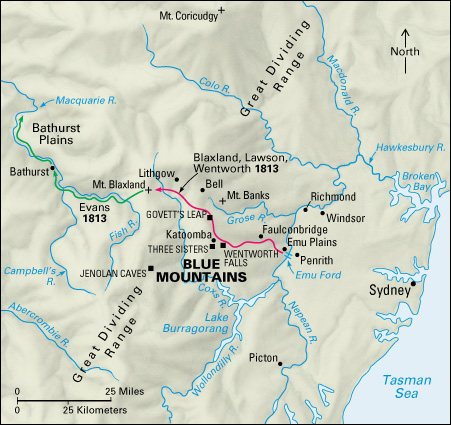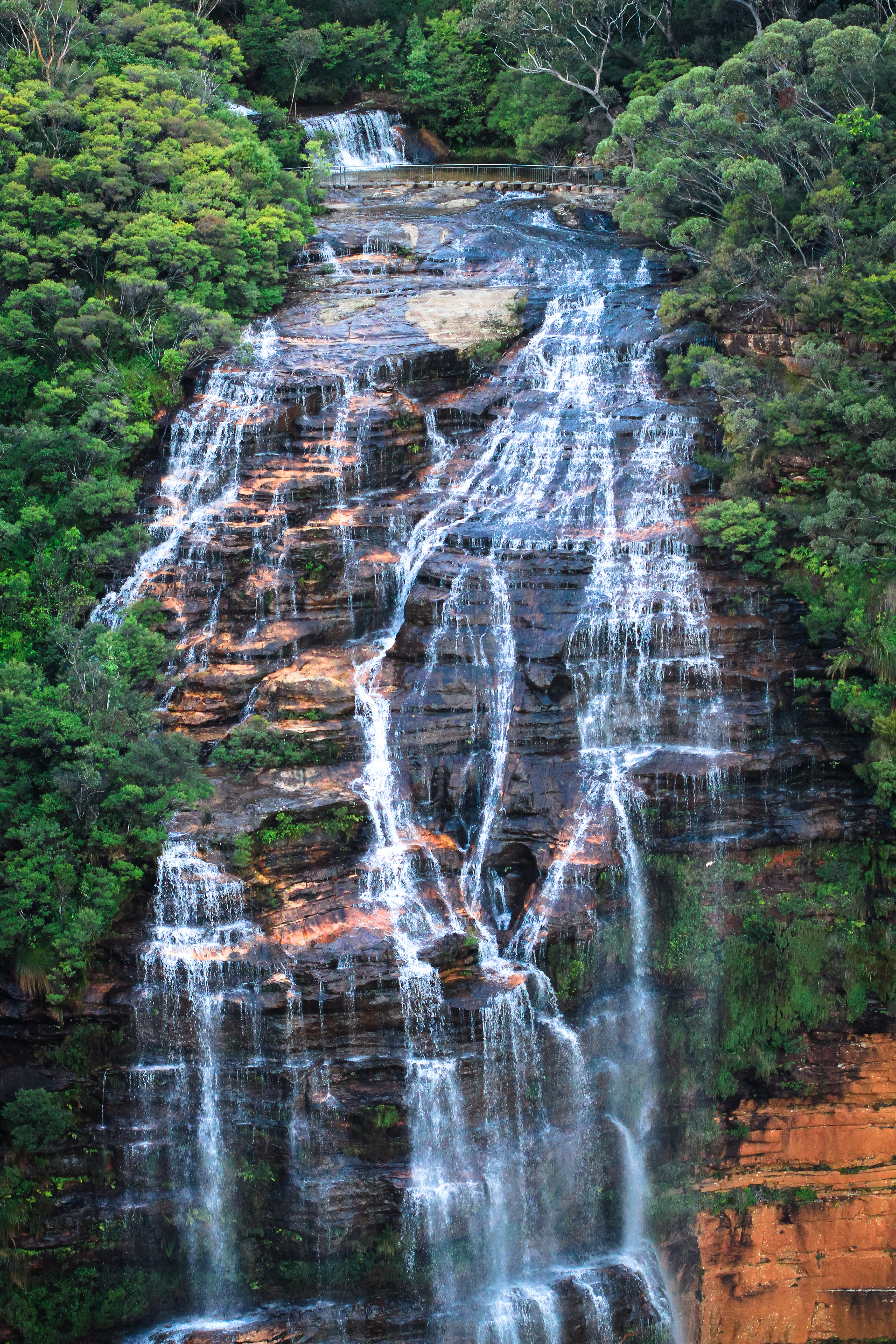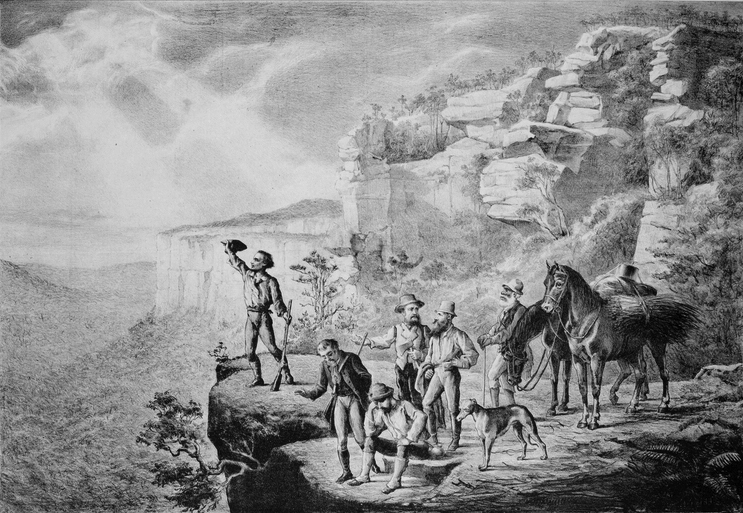Blue Mountains of Australia rise about 40 miles (65 kilometers) west of Sydney in the state of New South Wales. Early settlers gave them their name because they usually appear in a bluish haze. Fine drops of eucalyptus oil in the atmosphere cause the haze.




The Blue Mountains Range forms a plateau of the Great Dividing Range. The Blue Mountains cover about 550 square miles (1,420 square kilometers). They are bounded by the Emu Plains on the east and the Bathurst Plains on the west. The Blue Mountains rise to about 3,610 feet (1,100 meters) above sea level in the west. The Grose and Cox’s rivers cross the range in deep, steep-sided valleys. Most of the slopes are covered with eucalyptus trees.
Many tourists visit the Blue Mountains in the spring to see the local gardens in flower. Other tourist attractions include the Scenic Railway and Skyway near Katoomba and the Zig Zag railway near Bell. Scenic attractions include the Three Sisters rock formation, Wentworth Falls, and Govett’s Leap. The former home of the Australian artist Norman Lindsay, at Faulconbridge, is a museum.
The Blue Mountains are part of the City of Blue Mountains local government area. This administrative area has a population of 78,121 and includes 27 townships. Katoomba, just north of the Three Sisters rock formation, is a popular tourist destination. Other townships in the area include Lawson, Leura, and Wentworth Falls. In addition to tourism, the education, food services, health care, and retail industries employ many residents of the City of Blue Mountains.
Aboriginal peoples have lived in the Blue Mountains region for thousands of years. Aboriginal peoples are among the Indigenous (native), or First Nations, peoples of Australia. The Blue Mountains lie within the traditional lands of six Aboriginal groups: the Darkinjung, the Dharawal, the Dharug, the Gundungurra, the Wiradjuri, and the Wonnarua.
During the early days of British settlement in Sydney, the Blue Mountains blocked expansion. Explorers tried to cross them by way of the valleys, but found them impassable. Local Aboriginal people had established at least two routes through the mountains, but the settlers did not understand or value their knowledge of the region. In 1813, the European Australian explorers Gregory Blaxland, William Lawson, and William Charles Wentworth crossed the range by following the mountain ridges. The English surveyor William Cox, aided by a group of convict laborers, built the first road over the Blue Mountains in 1815.
In 2000, the United Nations agency called UNESCO added the Greater Blue Mountains Area to the World Heritage List, an international registry of places with great natural or cultural value. The severe bushfires that burned in Australia from late 2019 to early 2020 impacted about 80 percent of the Greater Blue Mountains Area World Heritage site.
